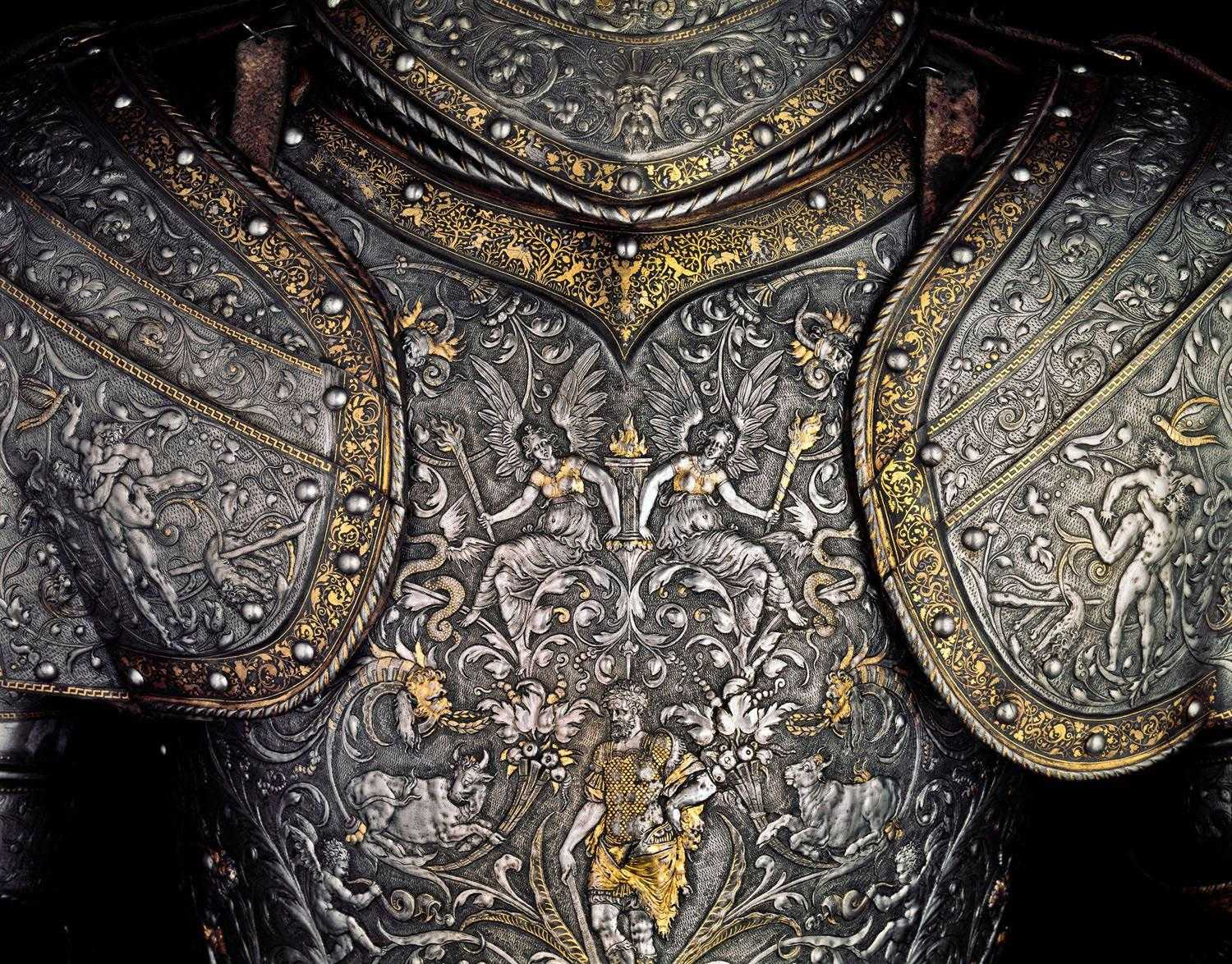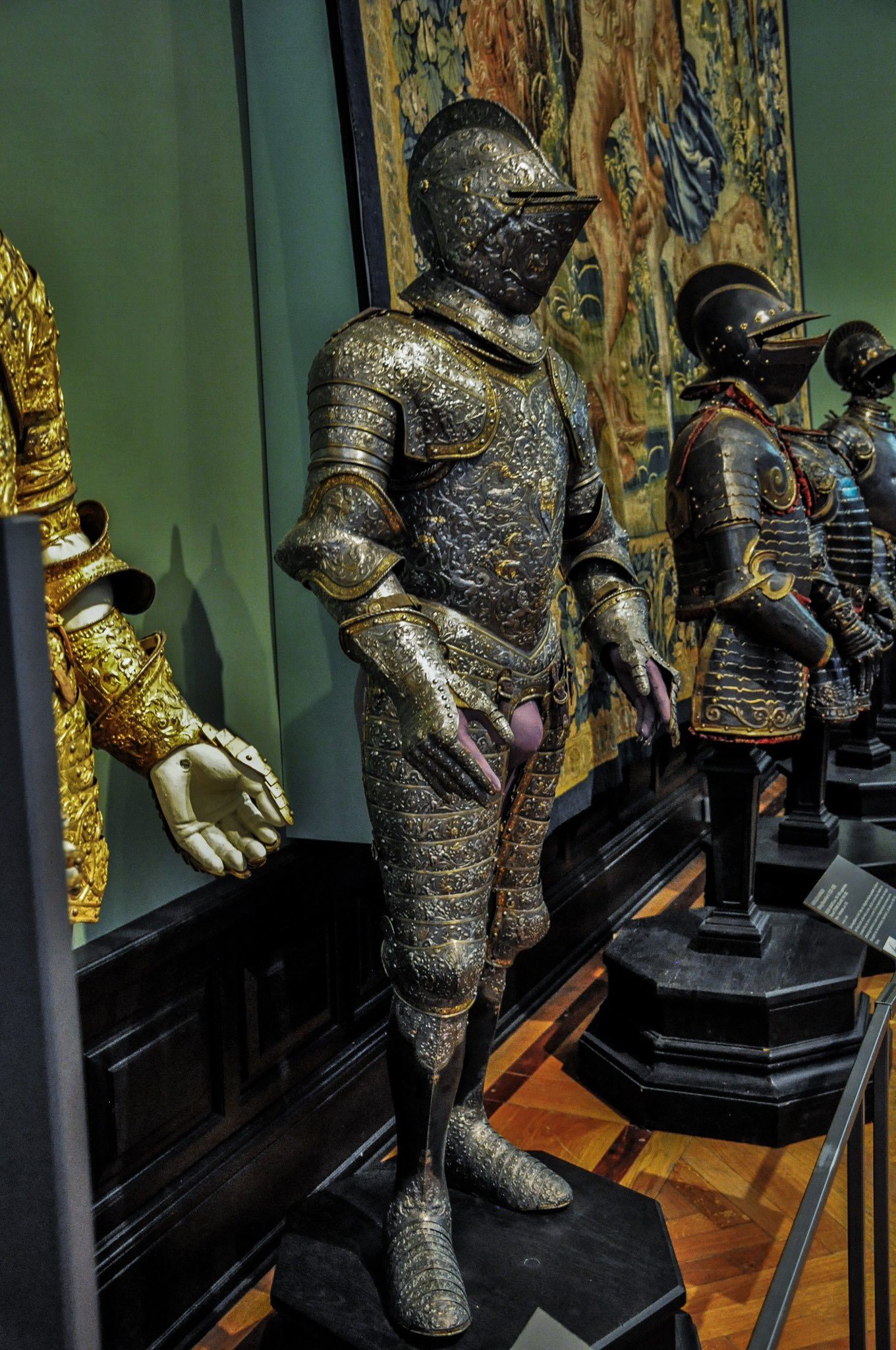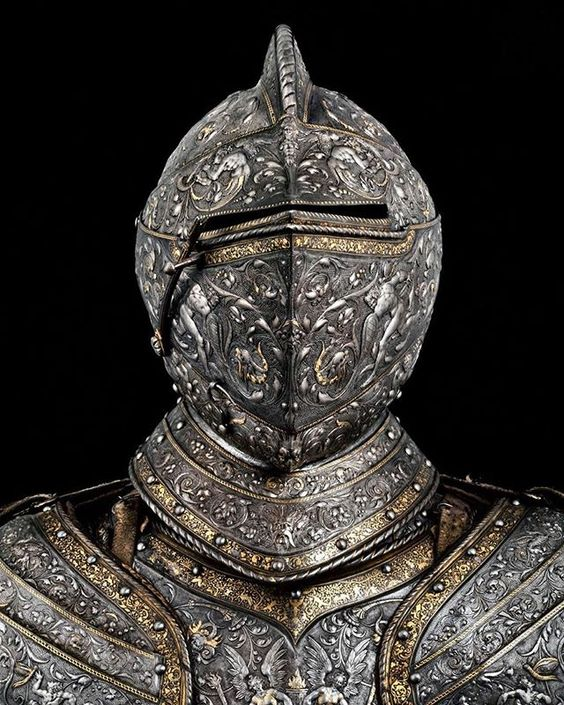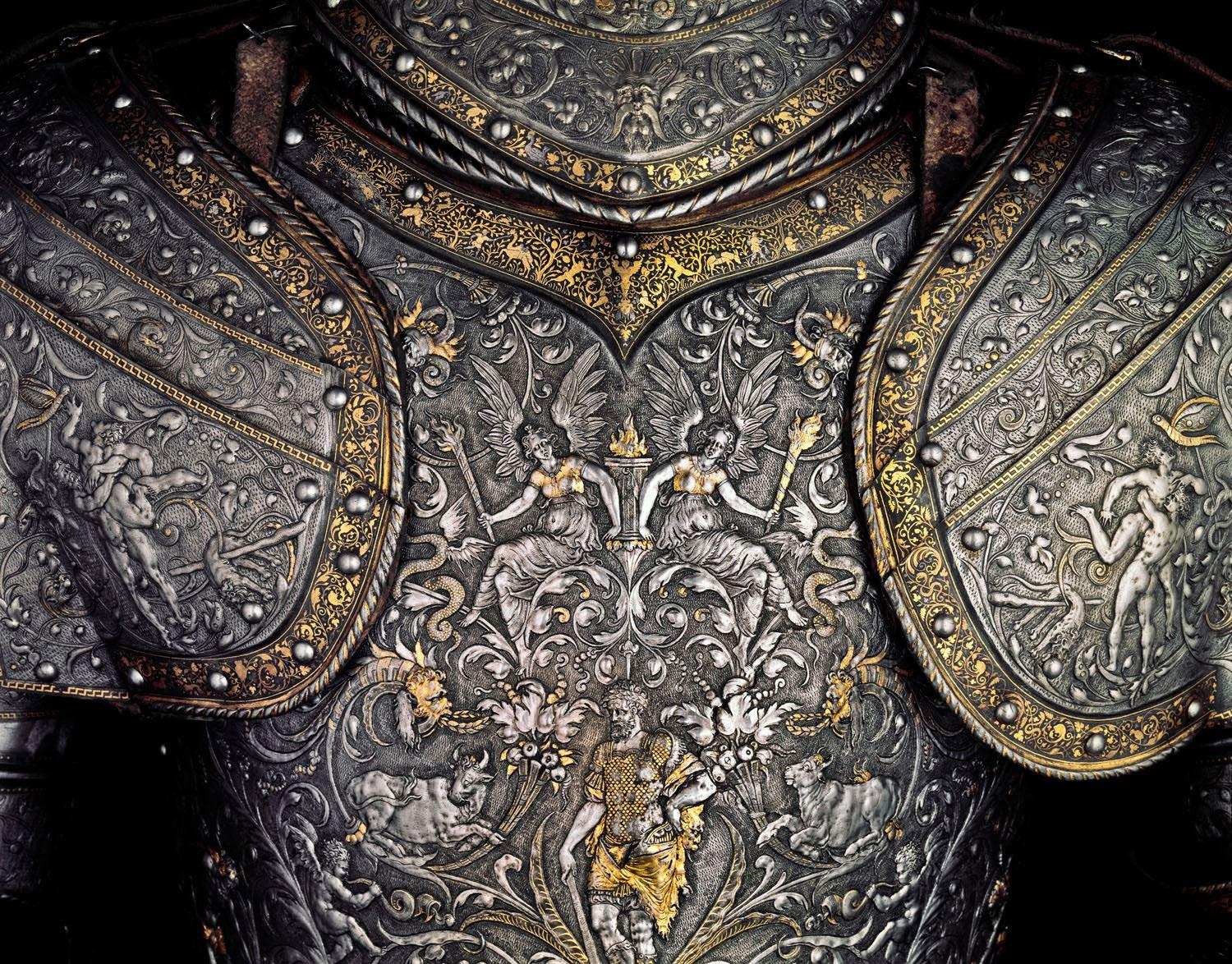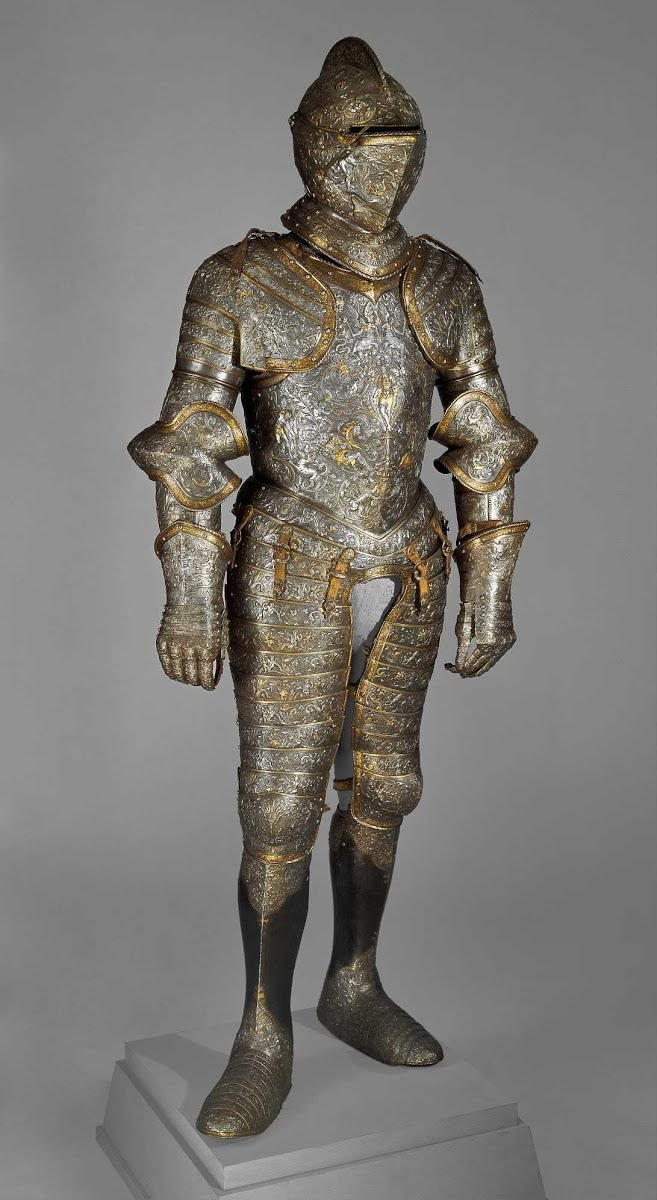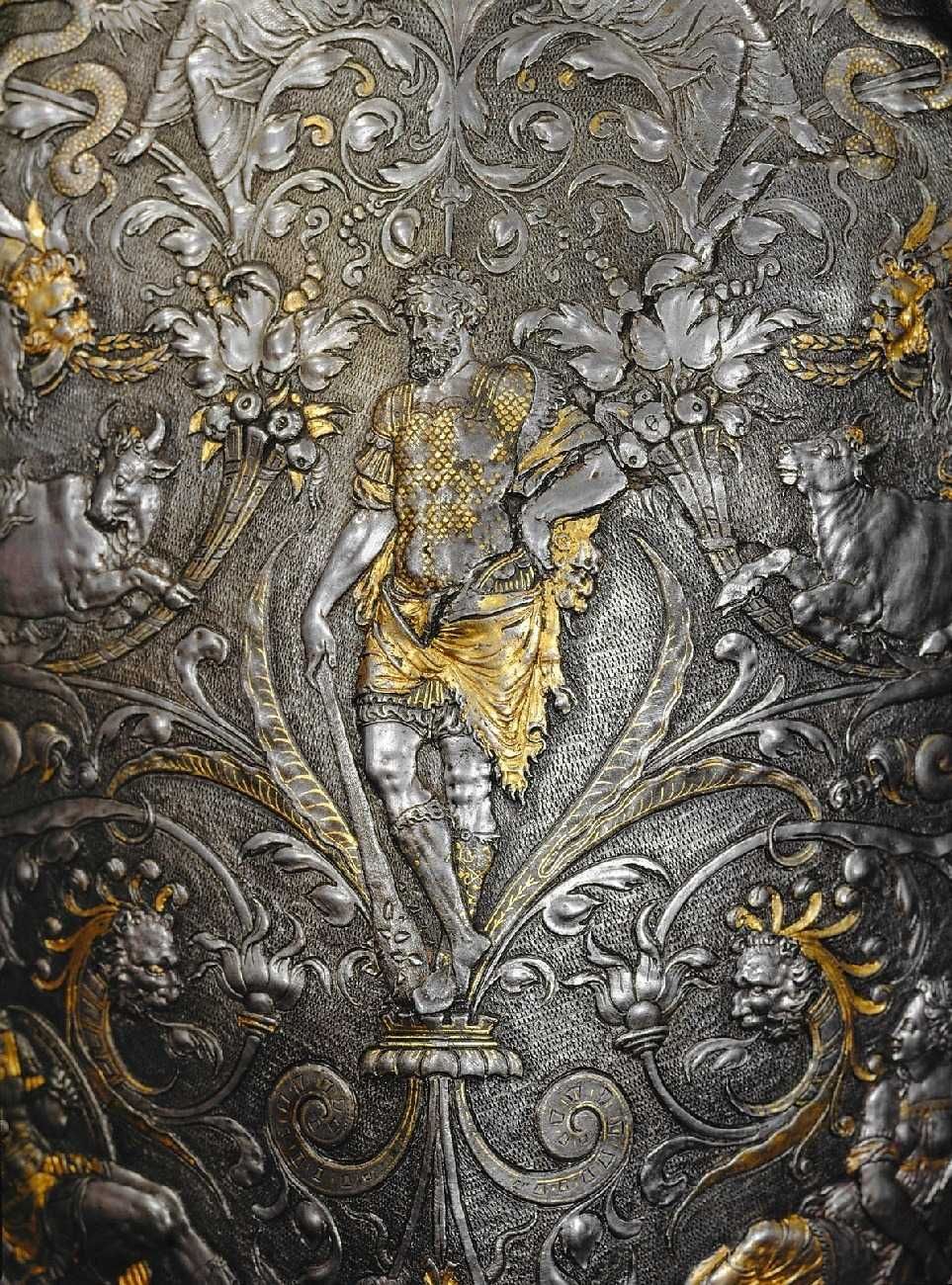The Hercules Armor of Emperor Maximilian II, created in 1555, stands as one of the most stunning examples of ceremonial armor from the Renaissance period. Housed in the Kunsthistorisches Museum in Vienna, this armor represents not only the exceptional craftsmanship of the time but also the deep symbolism and cultural significance associated with the European courts of the 16th century.
Historical Context
The mid-16th century was a period of political consolidation and cultural flourishing in Europe, particularly within the Habsburg Empire. Emperor Maximilian II, who ruled as Holy Roman Emperor from 1564 until his death in 1576, was a key figure in this era. Known for his intellectual curiosity and patronage of the arts, Maximilian II was a ruler deeply invested in the ideals of the Renaissance.
In this context, the commissioning of the Hercules Armor was not merely an act of acquiring protective gear; it was a deliberate expression of imperial power, cultural sophistication, and alignment with the heroic virtues exemplified by classical antiquity. The armor was likely crafted by one of the leading armorers of the time, perhaps in the workshops of Innsbruck, which were renowned for producing high-quality ceremonial armor for the Habsburg court.
Craftsmanship and Materials
The Hercules Armor is a full suit of ceremonial armor made primarily from steel. What sets it apart, however, is the extraordinary decorative work that covers nearly every surface. The armor consists of several key components, each crafted with meticulous attention to both function and form:
Helmet: The helmet is a classic close helmet, designed to protect the head and face during battle or in ceremonial displays. It features a visor that can be raised, and it is intricately adorned with scenes from the Labors of Hercules, along with other mythological figures and decorative motifs. The use of gold inlay on the etched steel enhances the visual impact of the helmet, making it not only a protective piece but also a work of art.
Breastplate: The breastplate is arguably the most striking element of the armor. It prominently displays a large, central image of Hercules performing one of his legendary labors, such as the slaying of the Nemean Lion. This scene is surrounded by ornate borders that feature scrollwork, grotesques, and floral patterns, all executed in the Mannerist style, which was popular in the mid-16th century. The combination of gilding and etching creates a striking contrast, highlighting the heroic imagery.
Backplate, Pauldrons, and Gauntlets: These elements are similarly decorated, with additional scenes from the Labors of Hercules. The pauldrons (shoulder guards) are especially elaborate, with depictions of mythological creatures intertwined with vegetal motifs. The gauntlets, while smaller, continue the theme, with etched figures and patterns that ensure the entire suit is a cohesive work of art.
Tassets and Greaves: The lower sections of the armor, including the tassets (which protect the thighs) and greaves (which protect the shins), are also richly decorated. These parts often feature smaller, more intricate scenes, likely due to their size, but they maintain the same level of detail and craftsmanship seen in the upper portions of the armor.
Artistic and Symbolic Significance
The Hercules Armor is far more than a functional suit of armor; it is a profound statement of Emperor Maximilian II's identity, values, and authority. The decision to adorn the armor with scenes from the Labors of Hercules was a deliberate choice, intended to draw parallels between the emperor and the mythological hero.
Hercules, in classical mythology, was known for his strength, courage, and ability to overcome seemingly insurmountable challenges. By associating himself with Hercules, Maximilian II was not only emphasizing his own strength and heroism but also positioning himself as a ruler who, like Hercules, was destined to triumph over the challenges of his time. This association would have been particularly potent in the context of the Holy Roman Empire, where the emperor's role was often seen as divinely ordained.
The use of Mannerist decorative styles further underscores the cultural sophistication of Maximilian's court. Mannerism, characterized by its exaggerated forms, complex compositions, and intricate details, was a style that appealed to the intellectual elite of the Renaissance. By incorporating Mannerist elements into the armor, the craftsman (or craftsmen) were not only creating a functional piece but also engaging with the broader artistic trends of the time.
The Role of Ceremonial Armor in the Habsburg Court
In the 16th century, ceremonial armor played a crucial role in the public and political life of European courts. Unlike battlefield armor, which was designed primarily for protection, ceremonial armor was intended to convey status, power, and authority. It was worn during important state occasions, such as parades, jousts, and other public displays, where the emperor's appearance would be seen by many.
The Hercules Armor would have been a key element in such displays, serving to reinforce Maximilian II's image as a powerful and cultured ruler. The detailed mythological imagery would have been instantly recognizable to educated audiences of the time, further enhancing the symbolic power of the armor.
Preservation and Display
Today, the Hercules Armor is preserved in the Kunsthistorisches Museum in Vienna, one of the world's leading museums for art and cultural history. The armor is part of the museum's extensive collection of arms and armor, which includes many other examples from the Habsburg dynasty.
The preservation of the Hercules Armor allows modern viewers to appreciate not only the artistic and technical skill involved in its creation but also the historical and cultural context in which it was made. As a piece of ceremonial armor, it offers a window into the world of 16th-century European courts, where power was expressed through both martial prowess and artistic patronage.
The Hercules Armor of Emperor Maximilian II is a masterpiece of Renaissance art and a powerful symbol of imperial authority. Its intricate design, rich in mythological symbolism and executed with exceptional craftsmanship, reflects the values and aspirations of one of Europe's most influential rulers. As it stands today in the Kunsthistorisches Museum, the armor continues to inspire awe and admiration, serving as a testament to the enduring legacy of the Habsburg dynasty and the cultural achievements of the Renaissance.

